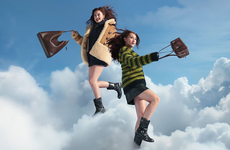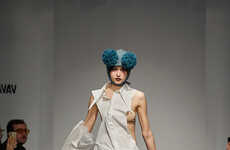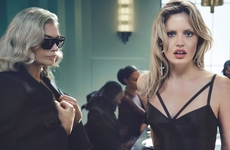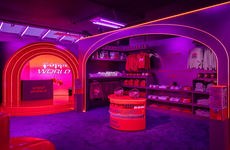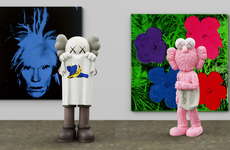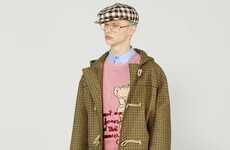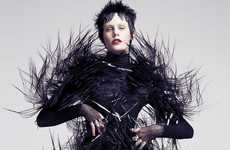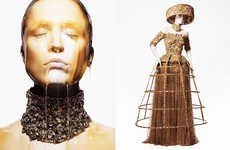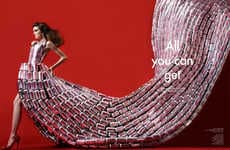
Top of the Pop by Gan for Harper's Bazaar Singapore Mocks Pop Culture
Sarah Robson — July 23, 2012 — Fashion
References: gtgan & designscene.net
Top of the Pop by Gan for Harper's Bazaar Singapore is an eccentric cover series for the August 2012 issue. This collection depicts model Joss from Ave Models sitting beside a bloody Diet Coke sign, a mickey mouse picture morphed into the Joker, a gory Campbell's soup ad and a picture with the words 'Karl Who?'
This series makes a mockery of popular culture, yet this ridicule reveals the world's reliance on globalized brand names and companies. This intriguing and controversial series definitely makes a stand against mass culture, and the garments styled by Windy Aulia only include top brand names.
The model is adorned in Chanel, Fendi, Dolce & Gabbana, Dior, Ralph Lauren, Burberry Prorsum and Celine. This colorful editorial is destined to rock the August issue of Harper's Bizaare.
This series makes a mockery of popular culture, yet this ridicule reveals the world's reliance on globalized brand names and companies. This intriguing and controversial series definitely makes a stand against mass culture, and the garments styled by Windy Aulia only include top brand names.
The model is adorned in Chanel, Fendi, Dolce & Gabbana, Dior, Ralph Lauren, Burberry Prorsum and Celine. This colorful editorial is destined to rock the August issue of Harper's Bizaare.
Trend Themes
1. Brand Parody - Companies can capitalize on the trend of mocking popular culture and using ironic humor to grab attention and create viral content for their brand.
2. Subversive Fashion - There is an opportunity for fashion companies to create unique pieces that make a statement by using subversive elements such as parody, irony, and re-appropriation of branding.
3. Anti-consumerism - Consumers are becoming more aware of the impact of mass consumption on the environment and society, creating an opportunity for companies to offer eco-friendly and sustainable products as part of a movement towards anti-consumerism.
Industry Implications
1. Fashion - The fashion industry can use parody and subversive elements to create unique designs that stand out and make a statement.
2. Advertising - Brands can use parody and irony to create memorable and shareable ads that create a strong connection with consumers, even if it means poking fun at themselves.
3. Sustainability - As consumers become more aware of the impact of mass consumption, there is an opportunity for companies to incorporate sustainable practices and products into their business model, offering a more eco-conscious alternative to mass-produced goods.
2
Score
Popularity
Activity
Freshness

